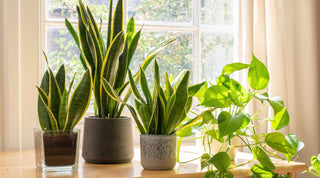Are you a passionate gardener looking for a creative way to enjoy the soothing scent of lavender? Look no further! In this post, we'll show you how to make homemade lavender soap with a goat's milk base, essential oils, and a beautiful purple hue. Whether you're a beginner or a seasoned soap maker, this step-by-step tutorial will help you create a fragrant and luxurious lavender soap that you'll adore.
Ingredients and Tools:
To get started, gather the following ingredients and tools:
- 1 pound of goat's milk soap base
- 15-20 drops of lavender essential oil
- Purple soap coloring
- Soap molds
- Microwave-safe bowl
- Spoon
- Knife
- Cutting board
Step 1: Prepare Your Workspace
Before you begin crafting your lavender soap, ensure you have a clean and organized workspace. Lay out all your ingredients and tools, so they're easily accessible.
Step 2: Cut the Goat's Milk Soap Base
Cut the goat's milk soap base into small, manageable pieces. This will help it melt more evenly. Use a knife and a cutting board for this task.
Step 3: Melt the Soap Base
Place the soap base pieces into a microwave-safe bowl. Microwave in 30-second intervals, stirring between each one, until the soap base is completely melted. Be cautious not to overheat it.
Step 4: Add Lavender Essential Oil
Once the soap base is melted, add 15-20 drops of lavender essential oil to the bowl. Stir well to distribute the fragrance evenly. Adjust the amount of essential oil to achieve your desired level of scent.
Step 5: Incorporate Purple Coloring
Add a few drops of purple soap coloring to the melted soap mixture. Stir until you achieve your desired lavender hue. Remember, a little goes a long way, so start with a small amount and add more if needed.
Step 6: Pour into Soap Molds
Carefully pour the lavender-scented, purple soap mixture into your soap molds. Fill them to the top, ensuring an even distribution.
Step 7: Let It Cool and Harden
Allow the soap molds to cool and harden for at least 2-3 hours. You can speed up the process by placing them in the refrigerator.
Step 8: Remove the Soap Bars
Once the soap bars have completely hardened, gently remove them from the molds. If they're stuck, tap the mold gently or place it in the freezer for a few minutes before trying again.
Step 9: Enjoy Your Homemade Lavender Soap
Your homemade lavender goat's milk soap is now ready to use! Place it in your bathroom or give it as a thoughtful gift to friends and family who appreciate the calming aroma of lavender.
Conclusion:
Creating homemade lavender soap with a goat's milk base is a rewarding and enjoyable project for gardeners of all skill levels. With just a few ingredients and simple steps, you can infuse the tranquility of lavender into your daily routine. So go ahead, unleash your inner soap-maker, and savor the relaxation in every bar!



